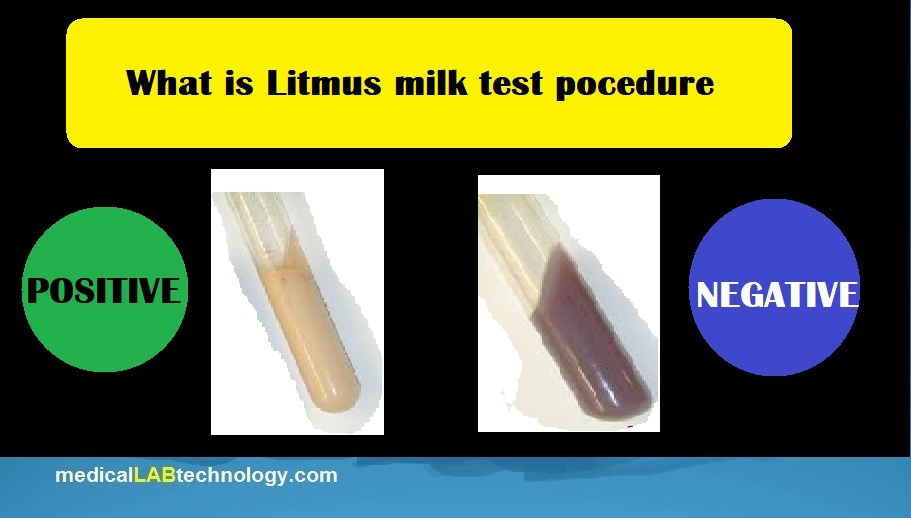The litmus milk decolorization test is an important biochemical; test used to identify clostridia.
Litmus milk test principle
A heavy inoculum of the test organism is incubated for up to 4 hours in a tube containing litmus milk. A change indicates a reduction of litmus milk in the medium color from mauve to white or pale yellow.
Litmus milk medium composition
Following are the test components.
- Litmus Granules – 80 g
- Ethanol – 300 ml
- Milk – 500 ml
Distribute in 5 ml eloquent to a small screw-capped bottle. Sterilize it by steaming it for 20 minutes on three successive days.
Litmus milk medium preparation steps
- Solution A – 300 ml (litmus solution)
- Solution B – 250 ml (skimmed milk)
Following are the steps
- Grinde the granules in 150 ml ethanol alcohol and transform them into a flask.
- Boil the flask for 1 minute and decent to another flask.
- Add the remaining alcohol to the flask and boil for another minute. Decent this to the other flask.
- Now add hydrochloric acid (HCl) drop by drop, while shaking the flask continuously until the medium color change to purple.
- Steam the milk for 20 minutes and let stand overnight for the cream to separate.
- Siphon the milk into a clean flask.
Litmus milk decolorization test procedure steps
Following are the steps in the L.milk test
- Using a large, sterile loop. Inoculate 5 ml of sterile litmus milk medium with the test organism.
- NOTE: A heavy inoculum must be used.
- After inoculation, incubate that medium at 35 to 37 C for up to 4 hours.
- Examining at half-hour intervals for a reduction reaction by a change in color from mauve to white or pale yellow.
Litmus milk test result
- If the medium color change to white or pale yellow. The litmus milk test will be positive.(C. perfringens)
- But if the medium color remains unchanged, the result will be negative (Strept Viridans).
